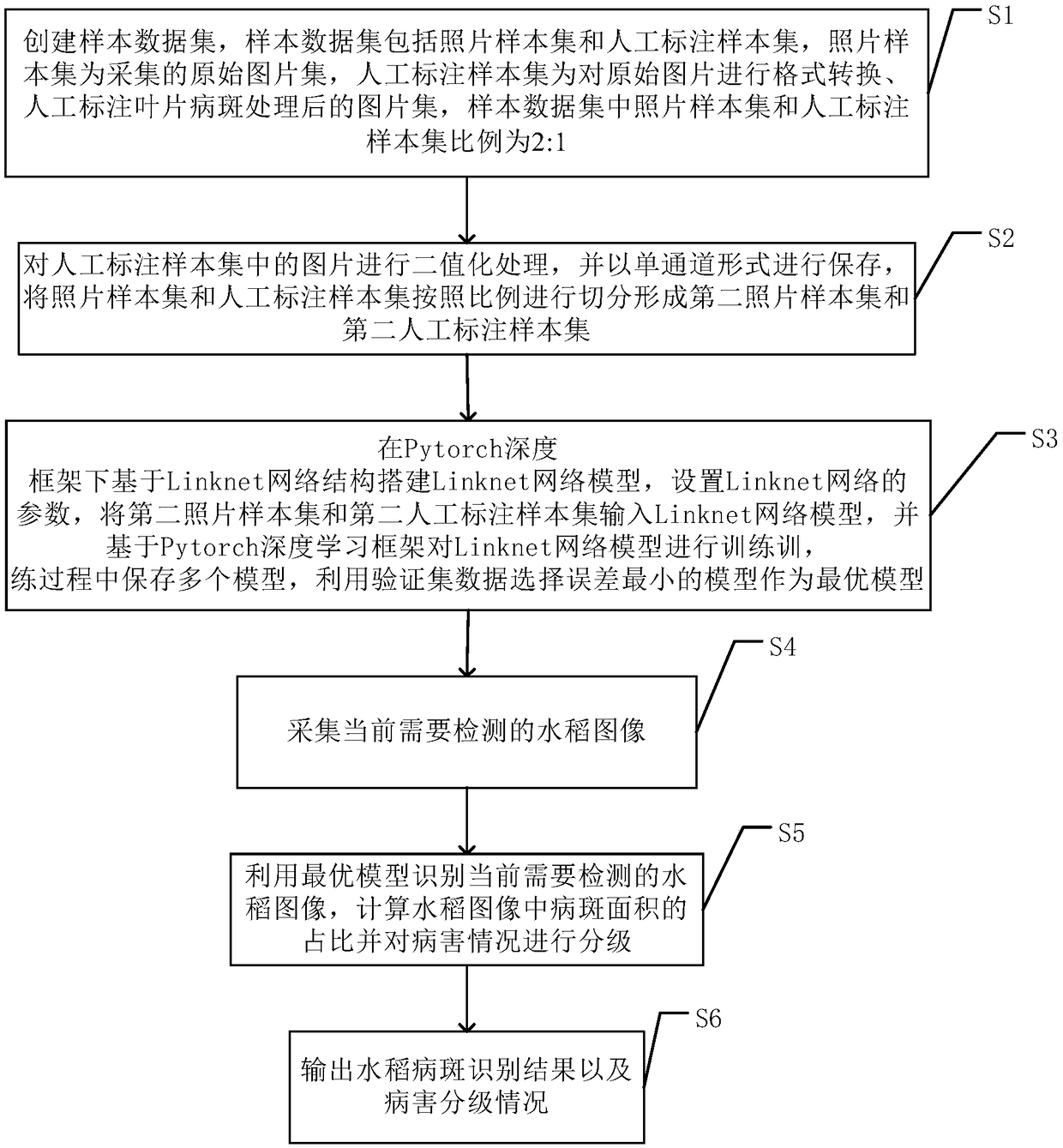Rice lesion detection method and system based on deep learning
A deep learning and detection method technology, applied in the field of image processing, can solve the problems of low rice leaf lesion recognition efficiency, poor generalization ability and field practicability, so as to improve information utilization, generalization ability and field practicability , the effect of reducing environmental pollution
- Summary
- Abstract
- Description
- Claims
- Application Information
AI Technical Summary
Problems solved by technology
Method used
Image
Examples
Embodiment 1
[0022] see figure 1 , figure 1 It is a flow chart of a deep learning-based rice disease spot detection method provided by an embodiment of the present invention. In an embodiment of the present invention, a deep learning network structure is used to detect rice disease spots, and its specific steps are as follows:
[0023] S1: Create a sample data set. The sample data set includes a photo sample set and a manual labeling sample set. The photo sample set is the original picture set collected, and the manual labeling sample set is the format conversion of the original picture and manual labeling of leaf lesions. The picture set, the ratio of the photo sample set and the manual annotation sample set in the sample data set is 2:1.
[0024] S2: Perform binarization processing on the pictures in the manual labeling sample set, and save them in the form of a single channel, divide the photo sample set and the manual labeling sample set according to the ratio, and form the second ph...
Embodiment 2
[0038] Such as figure 1 As shown, a kind of rice disease spot detection method based on deep learning provided by the invention comprises the following steps:
[0039] S1: Create a sample data set. The sample data set includes a photo sample set and a manual labeling sample set. The photo sample set is the original picture set collected, and the manual labeling sample set is the format conversion of the original picture and manual labeling of leaf lesions. The picture set, the ratio of the photo sample set and the manual annotation sample set in the sample data set is 2:1.
[0040] Optionally, the photo sample set in step S1 is a lossless photo in DNG format captured by the camera onboard the drone.
[0041] It should be noted that the embodiment of the present invention is only an exemplary photo format, and photos in other lossless formats are also available, and the present invention does not specifically limit this.
[0042] Optionally, the format conversion in step S1 r...
Embodiment 3
[0078]The following provides application examples of the method and system for detecting rice disease spots based on deep learning in the present invention. In an embodiment of the present invention, a deep learning network structure is used to detect rice disease spots, and its specific steps are as follows:
[0079] S1: Create a sample data set. The sample data set includes a photo sample set and a manual labeling sample set. The photo sample set is the original picture set collected, and the manual labeling sample set is the format conversion of the original picture and manual labeling of leaf lesions. The picture set, the ratio of the photo sample set and the manual annotation sample set in the sample data set is 2:1.
[0080] In this embodiment, the number of pictures in the photo sample set is 200, and the number of manually labeled sample sets is 100.
[0081] S2: Perform binarization processing on the pictures in the manual labeling sample set, and save them in the fo...
PUM
 Login to View More
Login to View More Abstract
Description
Claims
Application Information
 Login to View More
Login to View More - R&D
- Intellectual Property
- Life Sciences
- Materials
- Tech Scout
- Unparalleled Data Quality
- Higher Quality Content
- 60% Fewer Hallucinations
Browse by: Latest US Patents, China's latest patents, Technical Efficacy Thesaurus, Application Domain, Technology Topic, Popular Technical Reports.
© 2025 PatSnap. All rights reserved.Legal|Privacy policy|Modern Slavery Act Transparency Statement|Sitemap|About US| Contact US: help@patsnap.com


